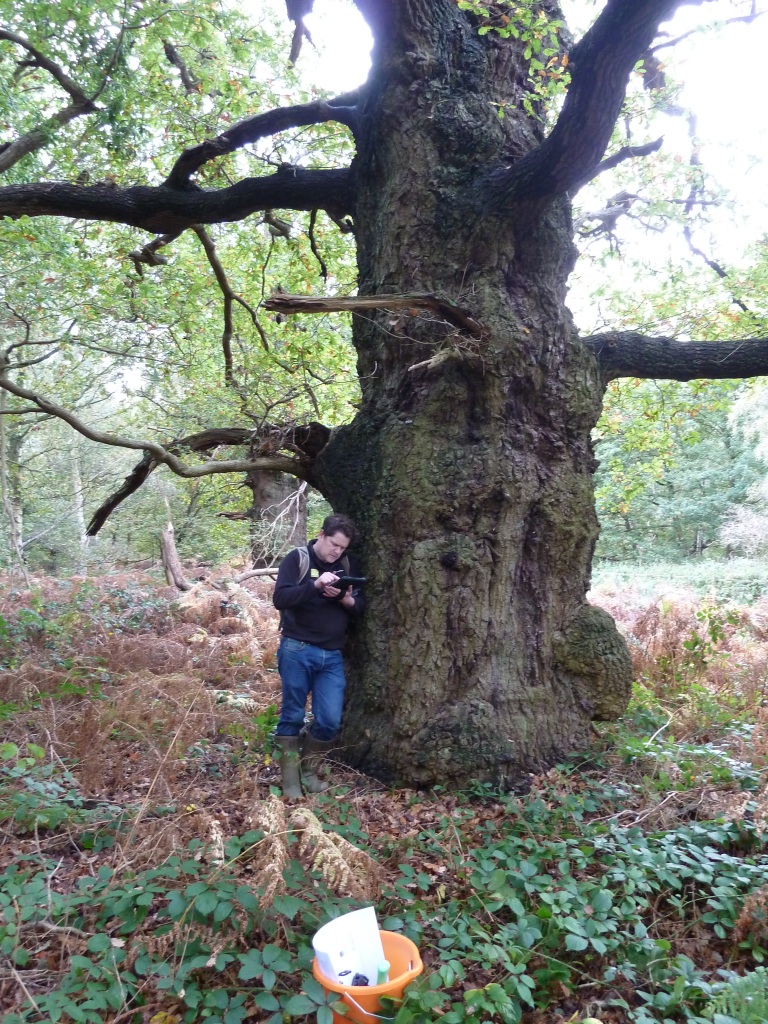29 May 2024 – Dr Sophie Louisa Bennett, PhD Conservation Biology (Lincoln 2016), longtime member of the Woodland Trust

There they stood, the very old or veteran or ancient trees, in a row. Spaced, but definitely in a row. At Edwinstowe.
As was/is her wont, Delphine encouraged me to go out to do something in Nature. She and Chris took me over to Sherwood – Sherwood ‘proper’ not the chopped off (and chopped up) bit we call The Old Wood, or Big Wood, in Skellingthorpe.
But we weren’t there to visit the Major Oak, or any other minor specimens. We were there to assist the Natural England Field Unit with a day of surveying one compartment.
After American pancakes at the Little Chef, we drove up to meet Francis (NOT my brother) and his crew. Delphine and Chris worked in one part; I worked with Francis in another. We plotted the trees and measured girths to get some idea of their age. Noting other species as we went.
I took a lot of photos, but cannot seem to re-find them: very remiss of a once-upon-a-time would-be librarian. Only one is now easily accessible – of Francis himself, standing against one of these grand old specimens. I sent a copy to him as I do with pictures I think people will like as a memento. Even if it turns out they don’t.
The Oaks seemed to be evenly spaced and seemed almost as if they had been planted. I could imagine an avenue. Nonetheless, the majority had girths of between 5 and 6 metres. Veteran if not ancient trees – possibly planted at the time of one of the King Charles (I mean I or II), or maybe even Elizabethan. I prefer to think Restoration… On one broad trunk a small bright yellow slug. Much to my surprise and fascination. An ancient woodland indicator (AWI), said Francis – not my brother (!) but Lead of the Natural England Field Unit we joined that day – uploading a picture and the record straightaway.
Some may scratch their heads and say, well, yes, you knew you were in ancient woodland. Mere confirmation. Ah, yes, but seeing and recording such a species has a special place in itself in surveying and conservation. There were other signs too – undesirables which might be regarded by some as thugs (although to others they provide resources other plants do not): Himalayan Balsam right there in this woodland compartment at Edwinstowe.
I wasn’t particularly shocked about the Himalayan Balsam, more amused, having spoken elsewhere to a researcher who had investigated the plant’s value to Bees and other pollinators. A Royal Entomological Society meeting. I often used to think of the floral thugs of the plant world, the non-natives or even indigenous thrivers, maybe better that than nothing at all. Wandering along hedgerows and seeing only Thistle or Ragwort in the late season.
At the end of the surveying day, we were of course scratched from the Brambles – a natural hazard in such a place – and I was probably already worrying about how I was going to pull through the threads on my clothes and socks. And only a little weary, even though none of the three of us was technically young any more. In fact, rather, mature. And one day older and wiser to boot.
Dr Sophie Louisa Bennett
